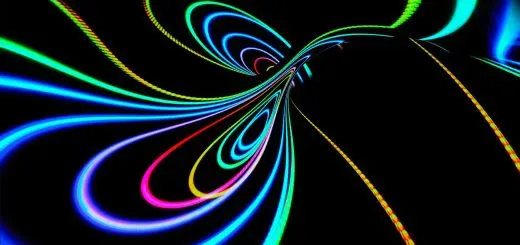Reiki for Pain Management: Easing Discomfort Naturally

Looking for more amazing products? Check out our online store and explore our collection here! Happy shopping!
Before diving in, please note: This post is for informational purposes only. If you’d like to know more about how we approach topics, feel free to check out our friendly Disclaimer Page.
Hey there, amazing readers! 
We’re committed to delivering quality posts, and your support (even just sticking around despite the ads) means everything to us. So, bear with us, and thanks for helping us keep the good vibes rolling. Now, on to the fun stuff!
TRANSLATE BUTTON AT THE END OF THE ARTICLE
Overview
Reiki, a Japanese healing technique, has gained popularity as a complementary approach to pain management.
This article aims to explore how Reiki can help ease discomfort naturally.
We will delve into the principles and techniques used in Reiki, as well as the science behind its effectiveness.
Furthermore, we will discuss success stories from pain patients who have benefited from Reiki and how it can be integrated into a holistic pain management plan.
If you are considering Reiki for pain relief, this article will also address common questions and guide you in finding a skilled Reiki practitioner.
Reiki for Pain Management: Easing Discomfort Naturally
Pain is a prevalent issue that affects millions of individuals worldwide.
While conventional pain management methods often involve medication and physical therapy, many people are turning to alternative therapies like Reiki for relief.
Reiki is a non-invasive and gentle approach that aims to balance the body’s energy and promote healing.
By harnessing the universal life force energy, Reiki practitioners believe they can help alleviate pain and promote well-being.
Understanding Reiki: A Japanese Healing Technique
Reiki originated in Japan in the early 20th century and was developed by Mikao Usui.
The word "Reiki" combines two Japanese words: "rei" meaning universal or spiritual, and "ki" meaning life force energy.
Reiki is based on the belief that energy flows through all living things, and an imbalance or blockage in this energy can lead to physical, emotional, and mental ailments.
The practice of Reiki involves the transfer of energy from the practitioner to the recipient through gentle touch or by placing their hands near the body.
How Reiki Can Benefit Pain Management
Reiki is believed to work on multiple levels to help manage pain.
Firstly, it promotes relaxation and reduces stress, which can have a positive impact on pain perception.
Chronic pain is often associated with increased stress levels, and Reiki’s ability to induce a state of deep relaxation can help alleviate this.
Secondly, Reiki is thought to balance the body’s energy, addressing any blockages or imbalances that may contribute to pain.
By restoring the flow of energy, Reiki aims to support the body’s natural healing processes and reduce pain symptoms.
The Science Behind Reiki’s Effectiveness
While the scientific understanding of Reiki is still evolving, there is evidence to suggest its effectiveness in pain management.
Several studies have shown that Reiki can reduce pain intensity and promote relaxation.
One study published in the Journal of Alternative and Complementary Medicine found that Reiki significantly reduced pain in women undergoing abdominal hysterectomy surgery.
Another study published in Pain Management Nursing showed that Reiki improved pain scores and mood in cancer patients.
Although more research is needed, these studies provide promising insights into the potential benefits of Reiki.
Uncovering the Role of Energy in Pain Relief
The concept of energy is fundamental to Reiki, and its role in pain relief is worth exploring.
According to Reiki practitioners, pain can be seen as a manifestation of energy imbalance or blockages in the body.
By channeling life force energy into the affected areas, Reiki aims to restore balance and support the body’s self-healing mechanisms.
This approach aligns with the principles of traditional Chinese medicine, which views pain as a result of disrupted energy flow.
Reiki can be seen as a way of manipulating and redirecting energy to alleviate pain and promote well-being.
Reiki as a Complementary Approach to Pain Management
It is important to note that Reiki should not be seen as a standalone treatment for pain management.
Instead, it is often used as a complementary approach alongside conventional medical care.
Reiki can enhance the effects of other pain management strategies, such as medication, physical therapy, and psychological support.
By addressing the energetic aspects of pain, Reiki seeks to support the overall well-being of the individual and enhance their body’s ability to heal.
Exploring the Principles of Reiki Healing
Reiki is guided by five principles that provide a moral and spiritual framework for practitioners.
These principles, also known as the Five Reiki Principles or Five Reiki Precepts, are:
Just for today, I will not be angry.
Just for today, I will not worry.
Just for today, I will be grateful.
Just for today, I will do my work honestly.
Just for today, I will be kind to every living thing.
Through these principles, Reiki aims to promote a state of mindfulness and compassion towards oneself and others.
By cultivating these qualities, practitioners believe they can contribute to the healing process and promote overall well-being.
The Techniques Used in Reiki for Pain Management
Reiki techniques can vary among practitioners, but they generally involve the transfer of energy through gentle touch or hovering hands.
The practitioner may start by scanning the recipient’s body to identify areas of energy imbalance or pain.
Once identified, they will focus on these areas, using their hands to transmit healing energy.
The recipient may feel sensations such as warmth, tingling, or deep relaxation during the session.
Reiki sessions can last anywhere from 30 minutes to an hour or more, depending on the individual’s needs.
Success Stories: Reiki’s Impact on Pain Patients
Many individuals with chronic pain have reported positive experiences with Reiki.
They often describe a reduction in pain intensity, improved relaxation, and a greater sense of well-being.
For example, a woman suffering from fibromyalgia shared that Reiki sessions helped alleviate her pain and improve her sleep quality.
Another individual with chronic back pain found that Reiki provided relief and allowed them to reduce their dependence on pain medications.
These success stories highlight the potential benefits of Reiki as a complementary approach to pain management.
Integrating Reiki into a Holistic Pain Management Plan
If you are considering Reiki as part of your pain management plan, it is essential to consult with your healthcare provider first.
They can guide you on how to best integrate Reiki into your overall treatment approach.
Reiki can be used alongside conventional medical interventions such as medication, physical therapy, and counseling.
It is important to maintain open communication with your healthcare team and inform them of any complementary therapies you are utilizing.
Addressing Common Questions About Reiki for Pain Relief
Can Reiki cure my pain?
Reiki is not a cure for pain but aims to support the body’s self-healing mechanisms and promote overall well-being.It is important to have realistic expectations and view Reiki as a complementary approach to pain management.
Do I need to believe in Reiki for it to work?
Belief in Reiki is not required for it to be effective.Energy healing modalities like Reiki work on an energetic level and can benefit individuals regardless of their beliefs or understanding of the practice.
How do I find a skilled Reiki practitioner?
To find a skilled Reiki practitioner, consider asking for recommendations from trusted sources, such as healthcare professionals or friends who have had positive experiences with Reiki.It is important to choose a practitioner who is trained, experienced, and follows ethical guidelines.
Can I learn Reiki and practice it on myself?
Yes, it is possible to learn Reiki and practice self-healing techniques.Many individuals find value in learning Reiki for personal use, as it allows them to have greater control over their well-being and pain management.
Conclusion
Reiki offers a natural and holistic approach to pain management, focusing on energy balancing and promoting relaxation.
While the science behind Reiki’s effectiveness is still emerging, many individuals have reported positive outcomes, including reduced pain and improved well-being.
As a complementary therapy, Reiki can be integrated into a comprehensive pain management plan, alongside conventional medical interventions.
It is important to consult with healthcare professionals and find a skilled Reiki practitioner to ensure safe and effective use of this healing technique.

The Enlightenment Journey is a remarkable collection of writings authored by a distinguished group of experts in the fields of spirituality, new age, and esoteric knowledge.
This anthology features a diverse assembly of well-experienced authors who bring their profound insights and credible perspectives to the forefront.
Each contributor possesses a wealth of knowledge and wisdom, making them authorities in their respective domains.
Together, they offer readers a transformative journey into the realms of spiritual growth, self-discovery, and esoteric enlightenment.
The Enlightenment Journey is a testament to the collective expertise of these luminaries, providing readers with a rich tapestry of ideas and information to illuminate their spiritual path.
Our Diverse Expertise
While our primary focus is on spirituality and esotericism, we are equally passionate about exploring a wide range of other topics and niches 

To ensure we provide the most accurate and valuable insights, we collaborate with trusted experts in their respective domains 
Our blog originally focused on spirituality and metaphysics, but we’ve since expanded to cover a wide range of niches. Don’t worry—we continue to publish a lot of articles on spirituality! Frequently visit our blog to explore our diverse content and stay tuned for more insightful reads.
Hey there, amazing reader! 
Check out our store here and take a peek at some of our featured products below! Thanks for being awesome!











